Zen Shiatsu Clinical Externships


An externship is an opportunity for a student to explore a population or clinical setting that interests them. Students will submit an externship proposal to the director, and will meet at intervals to review casework. Externships may be done with our partner institutions, or students may create their own opportunities.
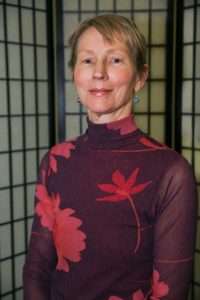
Carol Shuford shares her experience working with end-of-life patients at the Midwest Palliative and Hospice Care Center
I gave shiatsu to patients at the end of life for 30 hours over a ten week period at Midwest Palliative and Hospice Care Center, Glenview, Il. The experience was nothing short of amazing. When I began my study of shiatsu, I was looking for a way to build my compassion for and connection to others. I wanted to tap into my own energy and its potential. I found that to give shiatsu properly, ones habits of the ego needed to be dismissed and an open, smooth awareness needed to be developed and maintained.
The idea of dying gets short shrift in our culture and is encased in mystery, fear and all types of emotions to shield us from the actual fact of death. I knew that working with those whose death was imminent would require facing each person with kindness, respect and a wish for their peaceful transition. I knew that at least during each session, I would need to be unafraid of death and dying and that my concern be placed on the preciousness of the life that still remained.
I worked from the doctors’ patient status lists and asked the nurses to identify their patients who would be good candidates for shiatsu. I gave patients shiatsu in situ on whatever areas I could reach or was allowed to touch. Sometimes that meant focusing my attention on an area of the body that was off limits, wounds with tubes or feet too tender. Sometimes I could settle someone by addressing one area so I could touch another. There was a non-verbal man with brain cancer. His family said he seemed to be having bad dreams; he would swing his large arms up around his head and mumble. I held liver and gallbladder points on his feet and lower legs intending to settle his Hun and relieve pain. When his arms calmed to his sides and his breathing changed, I worked bladder points on his head, kidney sub-clavicularly to connect him to his jing. I rested in GB-21 and LU-1 bilaterally to descend energy and deepen his breathing more. His family was amazed and relieved by the change.
Often I would come upon a patient who was still deeply distracted by the ins and outs of daily life. This would express itself as frustration, or busy-ness. Here I would focus on the letting in of what is needed, and the letting go of the superfluous with the lung and large intestine channels. I would add CV-17, GV-16 + the wisdom eye and they seemed to connect to a larger self. Sometimes people looked astonished and radiant afterwards as if something unexpected had happened as they had turned their attention inward.
Dying people can be surrounded by those that don’t accept or acknowledge that they are dying. I accepted their situation and intended to offer them an opportunity to enjoy breathing more deeply into their lungs, calm their minds, welcome the transition and feel whole.
I gave shiatsu to the loved ones of the dying, who were often consumed with a complex mix of anxiety, grief or denial, regret, and fear. They had often neglected themselves during the process, showing as stiff necks, sore backs and sketchy digestion. My intention was to help them to be honest, present and to ignite a positive connection. Many declined shiatsu for themselves. I learned how to draw the family member into the energy of the session with the patient, calming and elevating both. I enjoyed giving them points for them to use with their loved ones, surreptitiously giving them a mini session.
All in all, it was a lot of listening with my whole self, looking, caring. I would know if it was the last time I was going to see someone. I would ‘let them go’, in my mind the following week and wish them well.
For my shiatsu externship, I approached the Zen Life and Meditation Center in Oak Park. I had visited their facility over a year ago to get a reiki treatment from the co-founder, June Tanoue, so I reached out to her about offering shiatsu at the Center. She agreed to trade a reiki treatment for a shiatsu treatment, so that she herself would know what the treatments entailed before opening it up to her members. She was immediately very excited to have me come and offer my services to members at ZLMC. Working with meditators was great because they focus their attention on breathing as a way of calming the mind, and I could expand that practice to breathing as a way of calming the body as well. Everyone had very positive things to say afterwards, a few people said they didn’t love traditional massage but really, really liked this as an alternative. Many people were interested in hearing from me when I graduated and I was sad to tell potential clients I was moving out of state, though it was a great opportunity to extoll the school and get them to explore finding a shiatsu practitioner here in the city. My favorite externship day happened the weekend of Thanksgiving, on the Saturday evening, June held a special memorial service to honor the one-year anniversary of her mother passing. It was a short ceremony that involved some chanting and incense offering, and then a few dance performances. Afterwards, all the attendees went over to the house for a potluck and socializing, and for 3 hours I saw clients upstairs in the reiki room, doing about 30 minute sessions so I could accommodate the number of people who wanted to try it out. During that evening, I worked on 5 different people who were all so different in their approach to their body and receiving work, but I felt I really connected with each one regardless, meeting them where they were and having a successful, present, healing session. At the end of the event, everyone departed, and then I stayed behind to give a session to June, with particular focus on letting go and processing both grief and love for her mother. June is a remarkable person, so very generous and open and kind in her energy, she attracts many members and students because of it. She is a healer herself, so I felt like I was learning so much from her as well as feeling my own confidence grow in giving sessions to a fellow practitioner. Everyone at ZLMC expressed their gratitude several times for bringing free shiatsu to them, but I felt equally grateful that I had such great experiences in being allowed to join a community, even for a brief period, and bring my skills to them. |
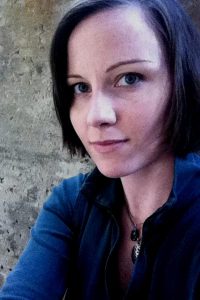 Marianna Csaszar shares her experience working with actors and crew at Lookingglass Theatre Company
Marianna Csaszar shares her experience working with actors and crew at Lookingglass Theatre Company
I did my externship with Lookingglass Theater Company. I have a background in theater as a scene designer, and I wanted to introduce and share shiatsu with that population. I knew that they were in the rehearsal process, getting ready for a new show, and I thought that would be a great opportunity and timing, to work with actors who are in rehearsal and work with the both the cast and crew members. Rehearsal is pretty intense work, physically mentally and emotionally, for everyone involved.
The logistics for giving shiatsu were great, they gave me a room that we use for watching videos and such, which was quiet and just the right size.
I did notice an interesting phenomenon. Of course, actors are people too, and there’s not so much different about working with them giving shiatsu, but I had a few cases where I wasn’t sure whether I was treating the actor or the character they were embodying. When giving shiatsu, you often have the sense – from visual cues and knowing their personality – of what kind of “type” they are from Chinese Medicine. Whether they’re a Fire type or Water type, for example.
With some of the actors, I found that I would have that initial impression about their individual type, but then there was a kind of “shell” of different types of tension that I didn’t expect, and knowing what their character in the play was like, and knowing that they are spending ten hours a day in that role, I could see that possibly that they were hanging on to the physicality or emotional traits of that role.
Just for example, there was a lady who was super-flexible, she is in her fifties but was playing a 90-year old woman on stage, and she wasn’t moving, she was in a wheelchair, and seemed unusually stiff when receiving shiatsu.
It’s the interesting paradox of acting; it’s rewarding, creative work, but often involves pretending to be miserable for two months. So it makes sense to “treat the character” that actors are portraying, since their bodies have to go through that experience energetically. That way they’re free to go back to “being themselves” again.
Initially, I talked to the artistic director about what I do, and that I’d like to offer this opportunity for cast and crew. He was very enthusiastic, and passed me on to their managing director, and she made the schedule based on what she thought was best. Having done this externship, when I do something similar in the future, I’ll have more input to give on the best schedule framework to get as many people as possible in for treatments. I might schedule sessions at the theater on a day other than a rehearsal day, or make an initial presentation to cast and crew, post an on-site sign-up sheet and then offer sessions at my own off-site office.
This externship was also helpful in making connections. Actors and crew were very open and interested in continuing treatments in the future, and I think a lot of doors will be opened to help me continue this kind of work at Lookingglass and other companies.
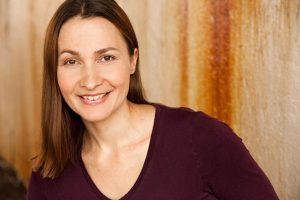 Katia Hosch Mazuy describes her externship working with physicians at the Raby Institute
Katia Hosch Mazuy describes her externship working with physicians at the Raby Institute
I did my shiatsu externship at the Raby Institute of Integrative Medicine in downtown Chicago, where I was already offering yoga therapy. The sessions took place in a beautiful setting. The Institute is a total realization of an Integrative healing center, where East meets West, and we can experience the reality of a well-designed, healing, therapeutic environment. I am very grateful for the opportunity the Raby Institute gave me and for the trust the patients who received shiatsu shared with me. I had the chance to present shiatsu at a practitioners’ meeting, which was an opportunity for the practitioners to get familiar with it and see where it could potentially benefit some of their patients.
I was referred two patients by one of the physicians. I worked with those two patients weekly over ten weeks.
Both patients had compound functional pathologies with no simple diagnosis. I had asked to perhaps work with patients with insomnia, anxiety mood disorders, emotional upsets, which can be part of many chronic conditions. I was able to check in along the way to make sure I was working in concert with the referring therapist and the patients shared a positive feedback of shiatsu with the practitioners and doctors they were consulting.
One of these patients truly helped me grow in my ability to manage my own energy. She had long-held symptoms, more complex, creating some frustration for me in the beginning that I didn’t feel my work was going anywhere, from my perspective. This perception of mine was happening partly because my own energy was really depleted after a session. It was a process of learning of how to manage my own intention and input of energy as I was working with someone who was facing a lot of challenges. With the guidance of my instructor, I shifted my perspective and coached her using guided visualizations, breathing techniques and affirmations to empower her process. It turned out to be an extremely rewarding growing process professionally and humanly.
Throughout the process of our first sessions together, I would feel my client connected with the breath and her body sensations, but at times it seemed, to me, that she was not fully “connected” to the work, or that I wasn’t feeling the changes I was hoping for, or she was not staying engaged with her breath and process in the way she had been at a previous time. She would also frame her progress in a way that seemed to me to put more power in my hands, relying on my reactions as her benchmark, more than trusting on her own sense. This was frustrating to me on a personal level and I also wanted to make sure I was contributing to her empowerment process, as part of the integrative model of a true patient-centered treatment.
My instructor and I discussed this internal dynamic and I realized that I should not read too much into the moment-to-moment reactions of someone during a session. Even though they are not so outwardly responsive, or I can’t necessarily feel something under my hands, they may be going through a profound internal process. We also discussed handling and letting go of my own feelings of frustration and energy depletion.
Based on his guidance and a consistent positive feedback from my client, I stopped reading into her way of receiving shiatsu. I realized that in fact, she was experiencing all sorts of sensation and movement internally, even though I wasn’t detecting what I expected under my hands and I started coaching her more into breathing and staying connected with her breath.
I offered her a different tool for how to visualize her own role and gave her back her power in the process. I related the shiatsu to her own life, and helped her set her own goals for treatment and tried to get her to articulate how her life would be different if she met those goals. I asked, If we could make the impossible possible in this session, what would that look like? I drew metaphors from her important hobbies in her life, to help her describe her progress poetically in those terms.
Both patients had more than an hour’s time per session, which was what I intended. I wanted to give them plenty of time to review meridian and yoga stretches that could help them. One woman felt like the guidance prepared her to deal with her issues and pain mentally and psychologically in a new way.
Things are constantly in cycles, and the patients were always in a new place compared to what they were describing in their past. Pain has a way to sit on other levels, and can come back as fresh as when you first had that wound. And yet you have evolved. If you can sit with the new sensation of pain and recognize where it came from, and hold the possibility that it can float out, just as it floated in, it may seem less hopeless and debilitating.
There was a beautiful companionship in that sense, that we were doing this together, and where they could envision themselves as having agency in the process.
What I realized was that I was seeing two patients who represented the complexity of who we all are. Sometimes when we’re out of balance, we can’t pinpoint one or the other cause; it’s a map we have to decipher together without being black or white about it.
After graduating, I definitely plan on offering Shiatsu in integrative therapeutic settings, including those focusing on offering treatment to children.
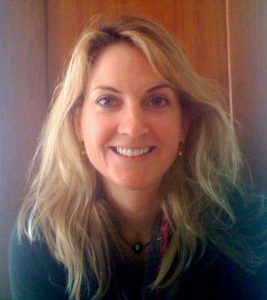 Kristin Burns describes her externship working with mothers at Parenthesis Family Center
Kristin Burns describes her externship working with mothers at Parenthesis Family Center
My externship was at Parenthesis in Oak Park, an organization that works with mothers, teens and older moms, they provide links to support services they may need, and have on-site services as well.
I worked with 18 mothers and some of the staff who wanted to go first so they could explain it to their clients.
The space I worked in was one of their toddler playrooms. They do provide daycare, so there was some noise, but the plus side was that they were able to provide daycare to the moms, so that they could receive the treatments.
I was pretty impressed with the courage of the teenage girls to try this, something that was completely foreign to them. That was pretty amazing. The adults as well, many hadn’t received any bodywork before.
One particularly gratifying experience was working with a woman who was really concerned about her body image. I was able to give her a safe space to have a nurturing experience regarding her body, and she did come back. The staff was really happy that she’d had a positive experience. It seemed she hadn’t had positive touch in some time. That was very rewarding to hear.
The women, also, exchanged childcare services for each other so that they could all have an opportunity to receive shiatsu. It was great to see those relationships develop as a part of the work.
I offered to return once a month as a volunteer, but I would love to do it five days a week. I was really happy to provide that service to their clients. The development director contacted me, and offered me a page in their fundraiser program, and the executive director wants to maintain a relationship after I graduate; I’m supposed to let her know when I’m finished with my training. That was great! I hadn’t expected that those little things might come up. It was great to see practice-building opportunities come out of this experience.
That sort of publicity is a win-win opportunity, it’s good exposure for me, and it’s helpful to Parenthesis to be able to tell their donors about all the services that the women are receiving.
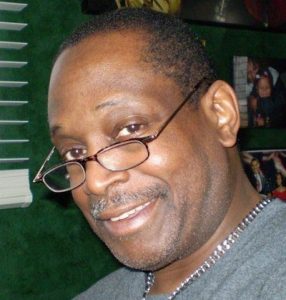 Zen Shiatsu Chicago student George Willis describes his Clinical Externship at Major Jenkins Apartments:
Zen Shiatsu Chicago student George Willis describes his Clinical Externship at Major Jenkins Apartments:
Major Jenkins Apartments is a facility located in Chicago’s Uptown neighborhood. Affectionately known as the “MJ”, it is the home to a very diverse group of people. Residents include recovering addicts, seniors with disabilities, and the mentally challenged. Some residents are also recent parolees. For me, this was a very rewarding and challenging experience, and gave me an opportunity to work with the exact population I am interested in serving.
From the very beginning, I had lines of residents waiting to experience “chair shiatsu” in my massage chair. I tailored treatments to last 20-30 minutes and worked primarily on Yu points on the back Bladder channel.
I worked in the facility’s dayroom. While the space was adequate, the atmosphere was challenging. Residents were accustomed to gathering there; hence the room was always noisy and full. I had to compete with a blaring TV and an occasional argument between residents. I rectified these distractions in later sessions by bringing in soothing Asian flute music “blasted” from my iPod docking station. Residents soon learned that flute music meant “chill out time”, as one resident put it.
Lucy is a resident who does not like to be touched, at all! I was told she wouldn’t even let the doctors touch her. On my last day, she shoved past everyone and sat in my chair. She has mental issues and can’t communicate very well. However, she did let me know, in her own way, that her neck hurt. I worked on her neck and she smiled through the entire session. The counselors were amazed that she allowed me to even touch her. In fact, she did not want to leave at the session’s end. I asked her if she would want another session if I came back. She smiled brightly and replied “you better come back”. This is why I must continue a relationship with the “MJ”.
I have promised the residents that I will still come back at least one day a month. I have networked with and educated other healthcare professionals at “MJ” about the potential benefits of shiatsu. I even worked on some of these therapists. The seeds have already been planted for a future practice, including client referrals from my new-found evangelists for these holistic methods.
This externship was exactly what I needed. The residents at Major Jenkins represent the special populations I intend to base my practice with. I could not have chosen a more challenging environment, nor a more appreciative and truly deserving group of clients.